Abstract
Creation and maintenance of electronic clinical alerts within a hospital's electronic medical record (EMR) or database poses a number of challenges. Development can require significant programming effort. Final testing should ideally be performed in a real clinical environment without clinician notification, which may create technical challenges. After an alert is in production, modifications may become necessary in response clinician feedback, changes in clinical factors, or technical issues. Changes may be required in the knowledge base utilized by the alert or in the presentation of the alert condition to the clinicians. Occasionally, different users within the clinical environment may wish to have the same alert data presented differently. We have developed a strategy which allows development of multi-functional alerts and facilitates modification of alert function and/or presentation with minimal to no programming effort. Some elements of this scheme may be appropriate for incorporation into clinical alerting standards.
Full text
PDF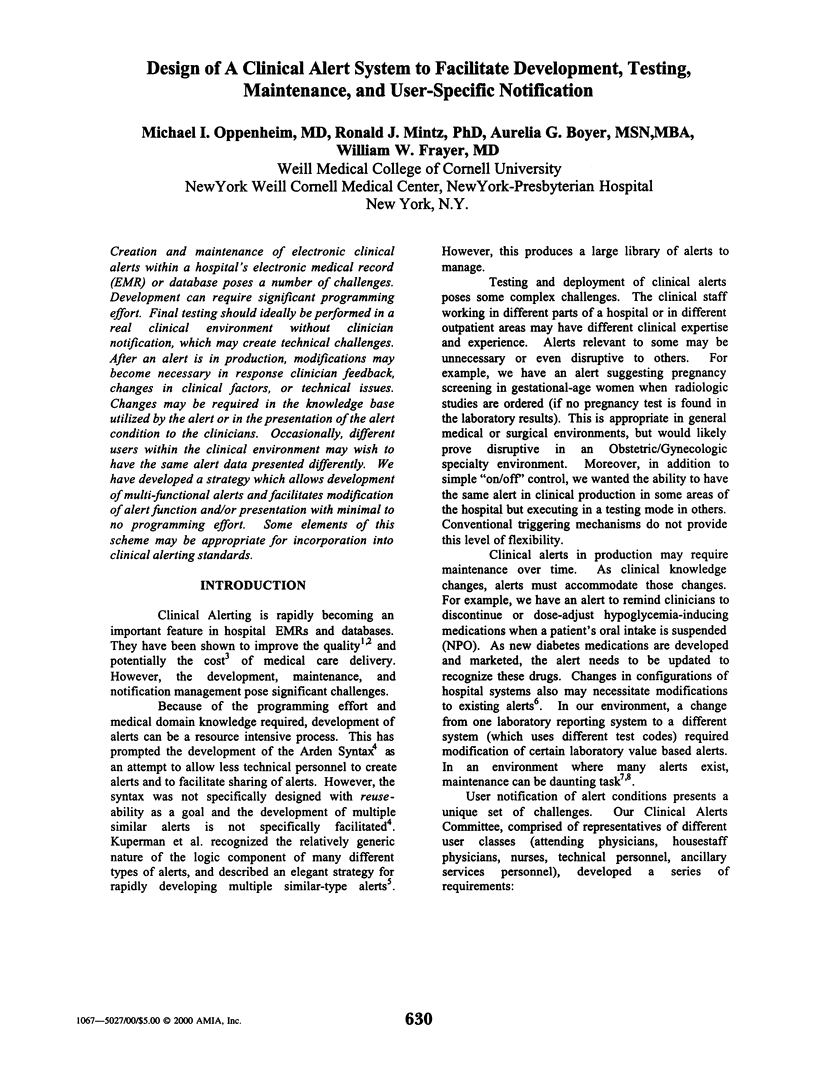
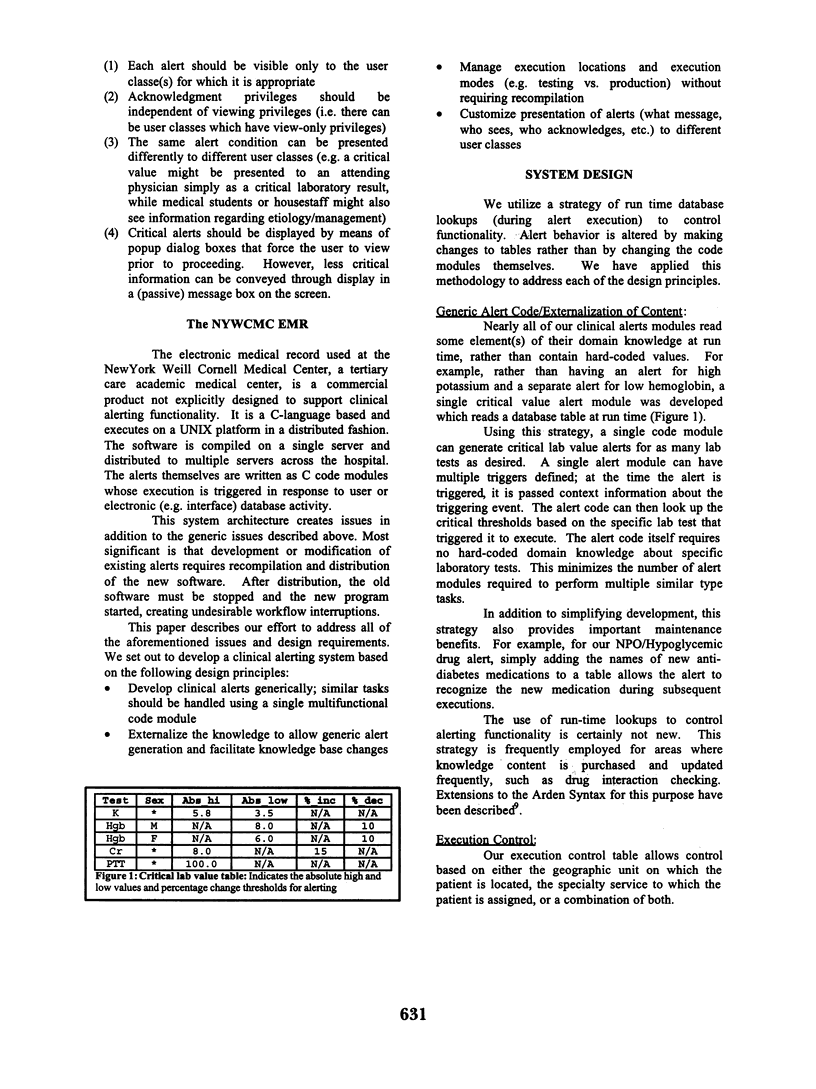
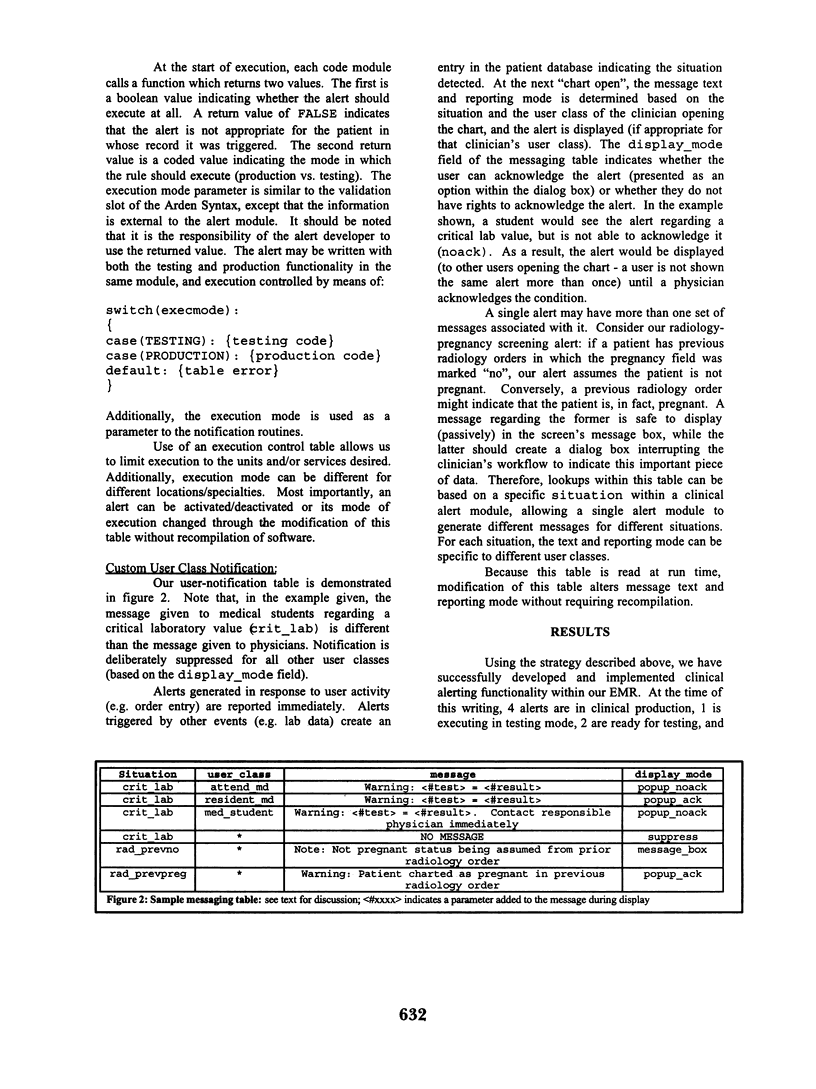
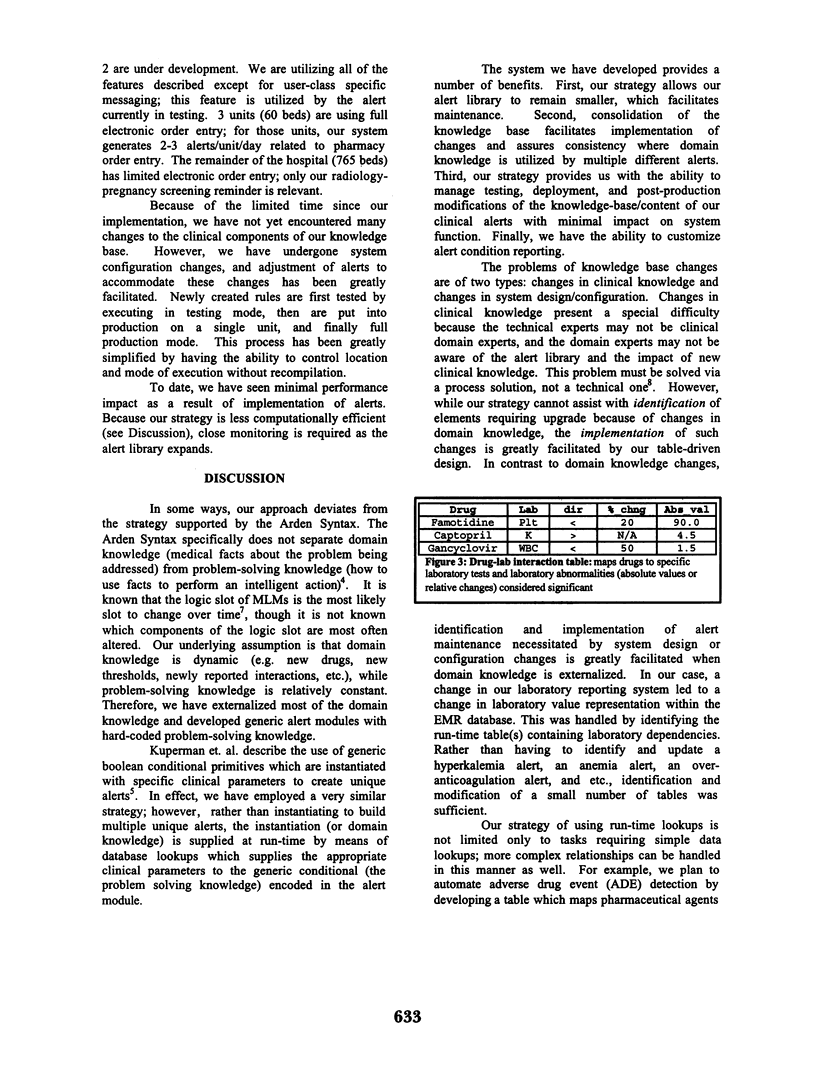
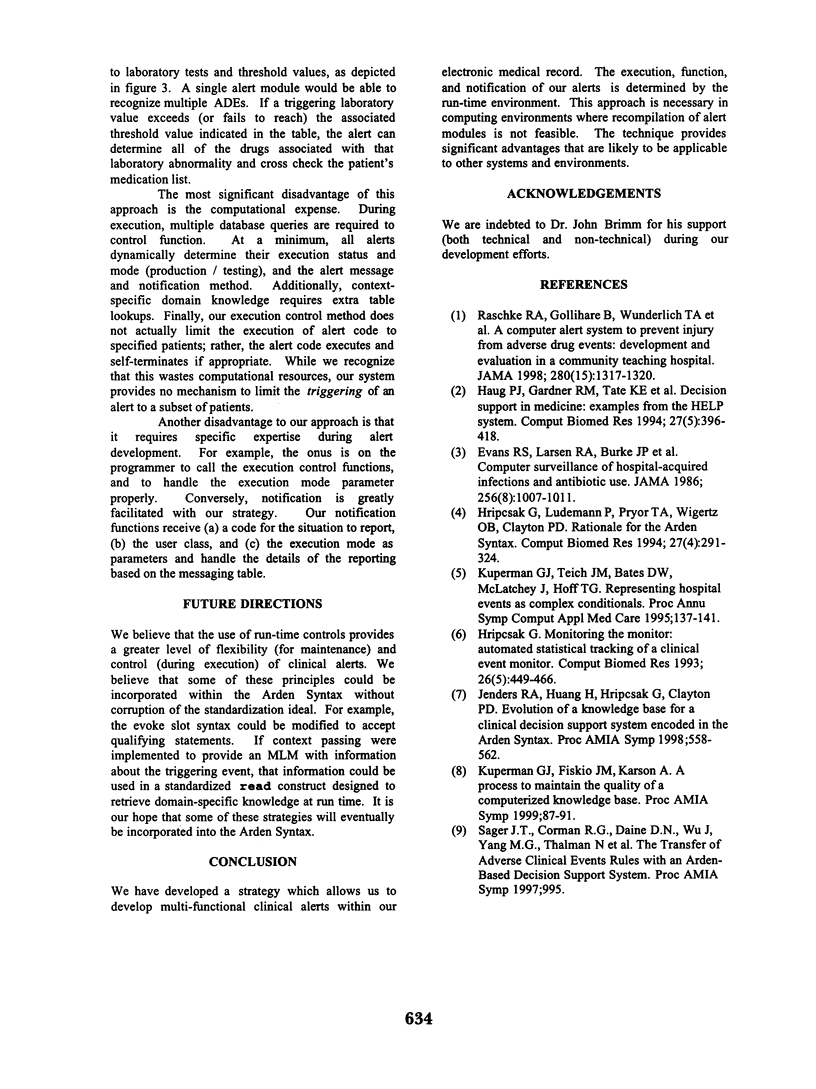
Selected References
These references are in PubMed. This may not be the complete list of references from this article.
- Evans R. S., Larsen R. A., Burke J. P., Gardner R. M., Meier F. A., Jacobson J. A., Conti M. T., Jacobson J. T., Hulse R. K. Computer surveillance of hospital-acquired infections and antibiotic use. JAMA. 1986 Aug 22;256(8):1007–1011. [PubMed] [Google Scholar]
- Haug P. J., Gardner R. M., Tate K. E., Evans R. S., East T. D., Kuperman G., Pryor T. A., Huff S. M., Warner H. R. Decision support in medicine: examples from the HELP system. Comput Biomed Res. 1994 Oct;27(5):396–418. doi: 10.1006/cbmr.1994.1030. [DOI] [PubMed] [Google Scholar]
- Hripcsak G., Ludemann P., Pryor T. A., Wigertz O. B., Clayton P. D. Rationale for the Arden Syntax. Comput Biomed Res. 1994 Aug;27(4):291–324. doi: 10.1006/cbmr.1994.1023. [DOI] [PubMed] [Google Scholar]
- Hripcsak G. Monitoring the monitor: automated statistical tracking of a clinical event monitor. Comput Biomed Res. 1993 Oct;26(5):449–466. doi: 10.1006/cbmr.1993.1032. [DOI] [PubMed] [Google Scholar]
- Jenders R. A., Huang H., Hripcsak G., Clayton P. D. Evolution of a knowledge base for a clinical decision support system encoded in the Arden Syntax. Proc AMIA Symp. 1998:558–562. [PMC free article] [PubMed] [Google Scholar]
- Kuperman G. J., Fiskio J. M., Karson A. A process to maintain the quality of a computerized knowledge base. Proc AMIA Symp. 1999:87–91. [PMC free article] [PubMed] [Google Scholar]
- Kuperman G. J., Teich J. M., Bates D. W., McLatchey J., Hoff T. G. Representing hospital events as complex conditionals. Proc Annu Symp Comput Appl Med Care. 1995:137–141. [PMC free article] [PubMed] [Google Scholar]
- Raschke R. A., Gollihare B., Wunderlich T. A., Guidry J. R., Leibowitz A. I., Peirce J. C., Lemelson L., Heisler M. A., Susong C. A computer alert system to prevent injury from adverse drug events: development and evaluation in a community teaching hospital. JAMA. 1998 Oct 21;280(15):1317–1320. doi: 10.1001/jama.280.15.1317. [DOI] [PubMed] [Google Scholar]


